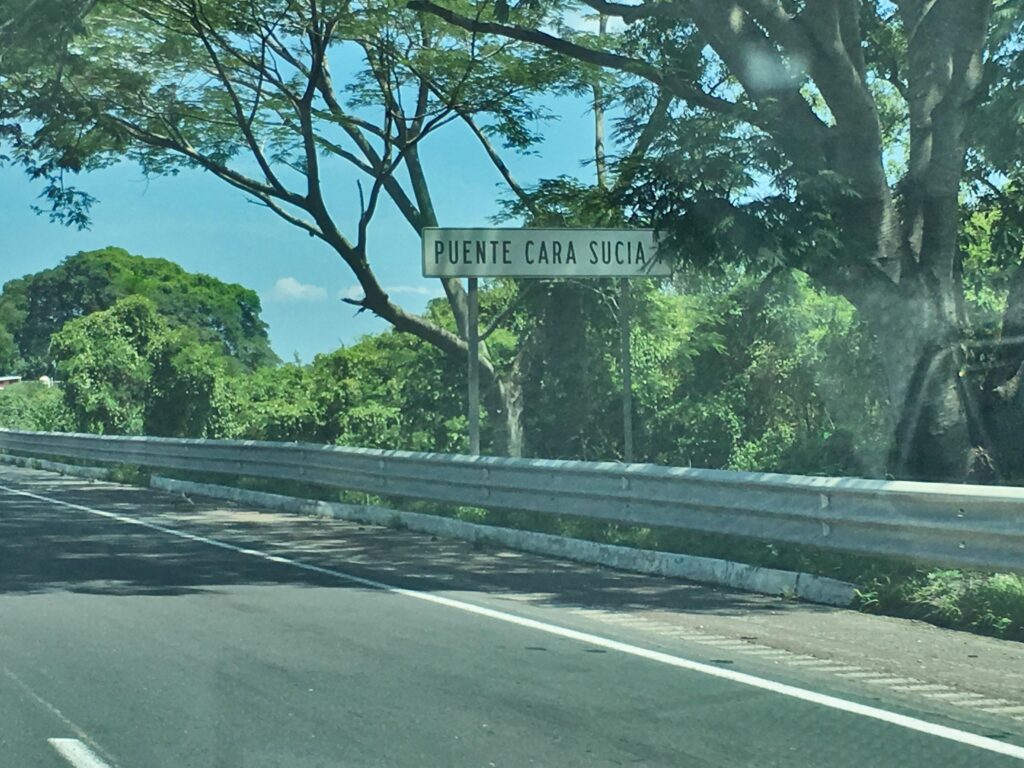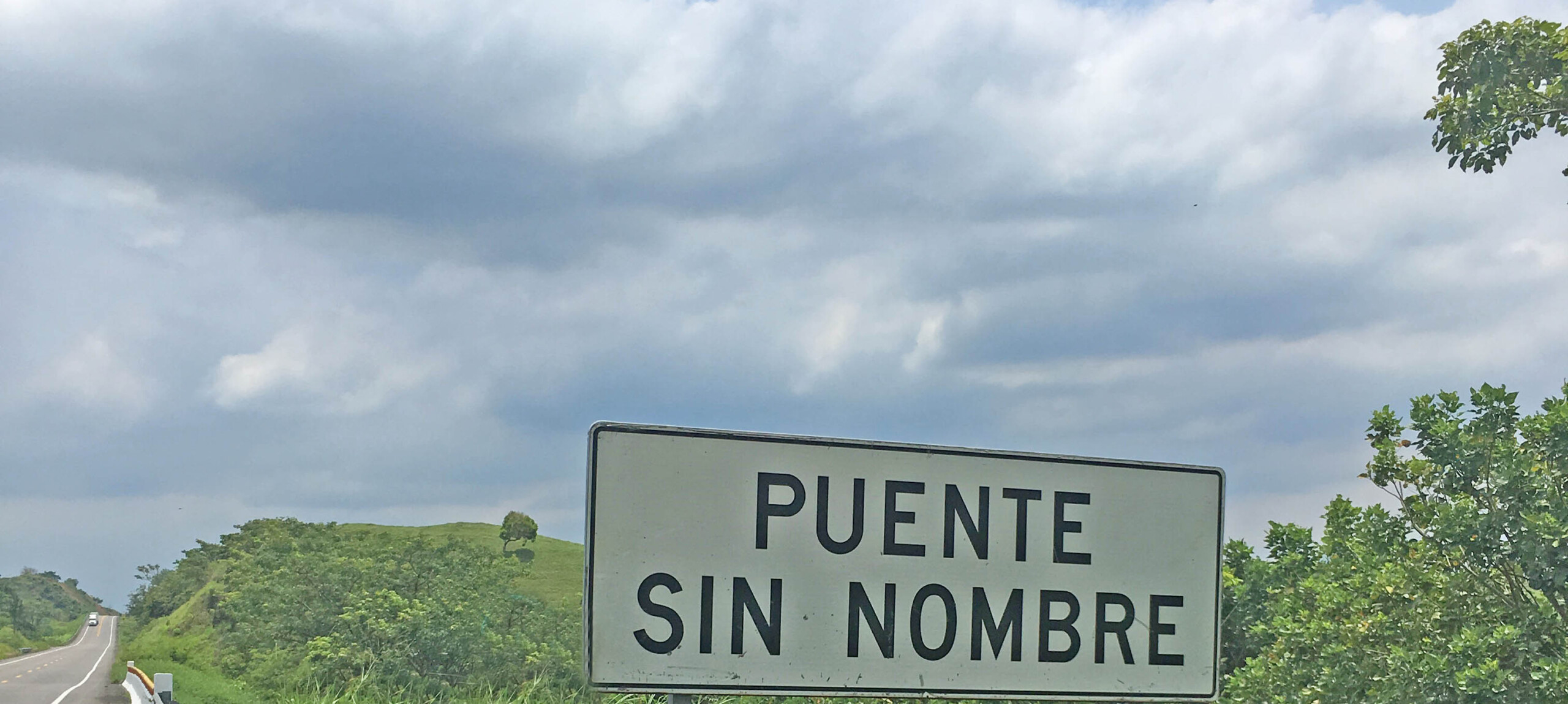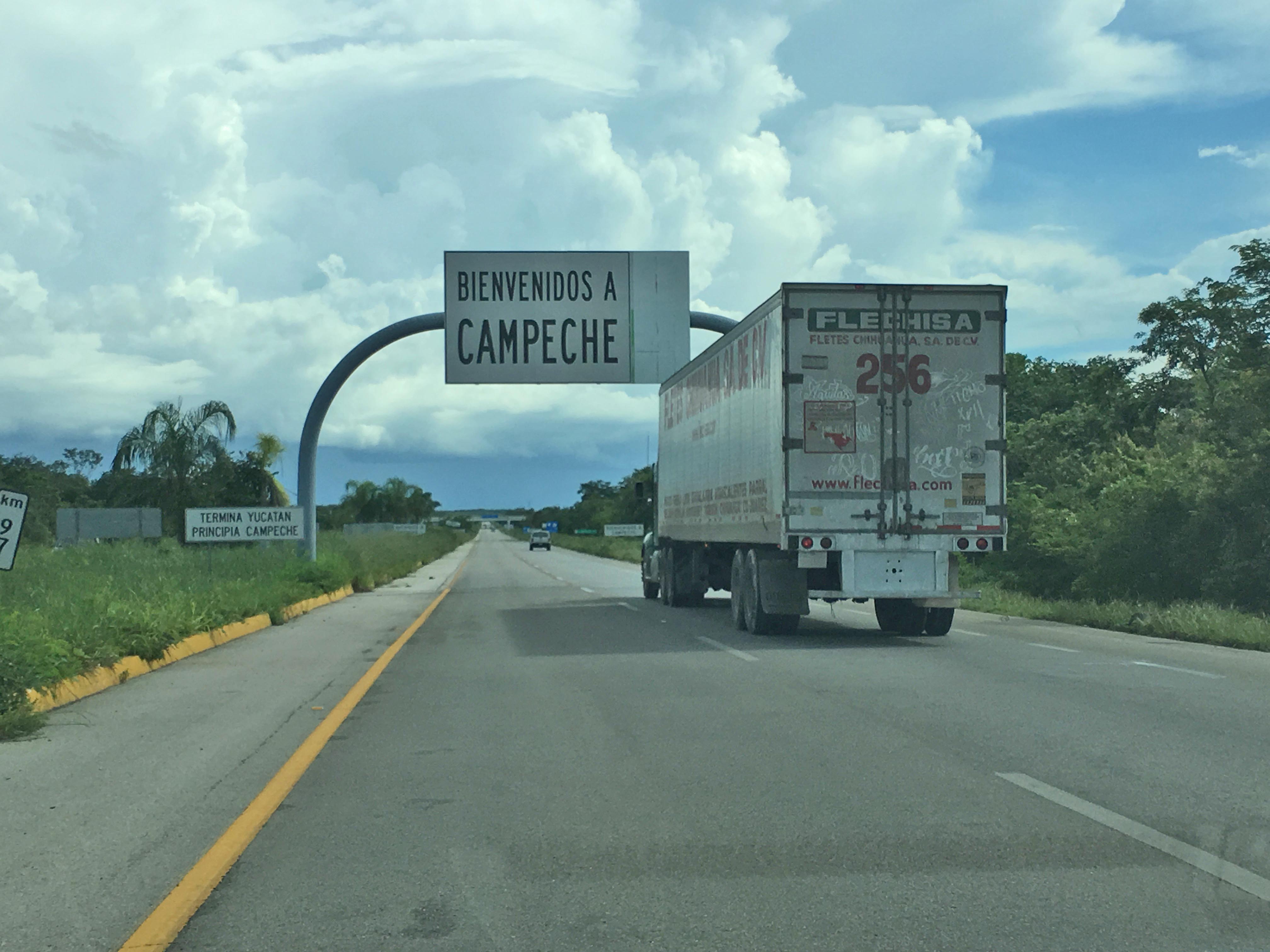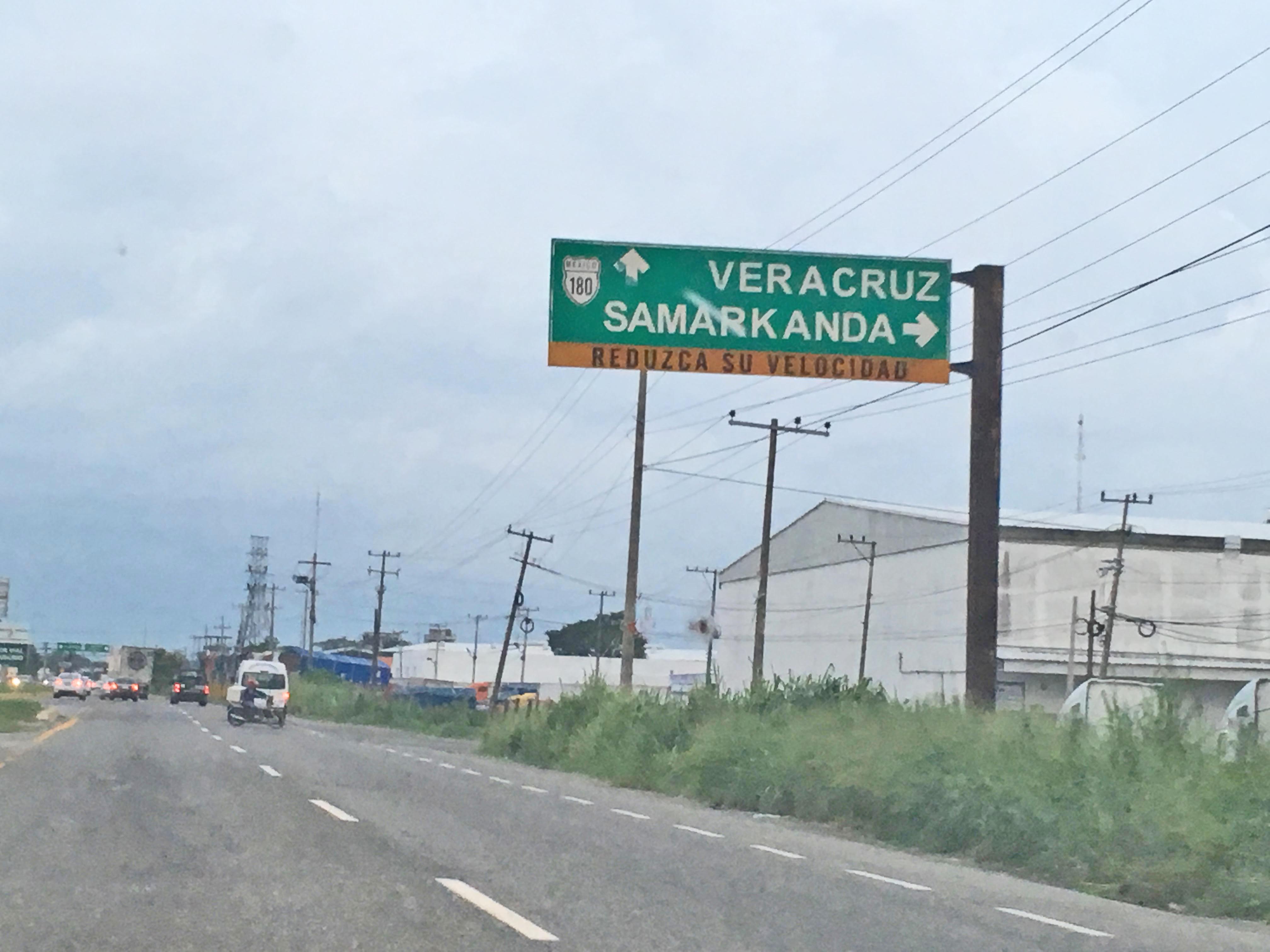A few years ago, I took a brilliant Mexico road trip, starting and ending in the city of Orizaba:
My friend and I had to backtrack from San Cris to Tuxtla Gutierrez to get to Palenque, but other than that, this was basically the correct route.
Along the road trip, I noticed some amusingly “humble” points of interest, through which I will provide some basic Spanish vocabulary.

To start, we’ve got the … what? The dirty face bridge?! And it has a twin?
Puente means bridge, sucia dirty, and cara is face. You will find Puentes Cara Sucia I & II on highway 150D near the Mexican city of Córdoba in Veracruz (state).

Somewhere along highway 145D, a bit north of the Puente Chiapas in Mexico’s Chiapas state lies this bridge. It appears someone had fun with naming this one.
Puente Sin Nombre literally means “Bridge Without a Name,” so you can either wax poetic about it, or let the Chiapas government know that calling it a Bridge Without a Name gives it a name. Or, was everyone in on it?

This one is more on point. Bienvenidos a Campeche = Welcome to Campeche (state). Easy. To the left of the sign, we have “termina Yucatan,” or “the end of Yucatan (state),” and “principia Campeche,” or “the start of Campeche (state).”

Now we’re getting into the weird. Near Villahermosa, the capital of Tabasco state, we’ve got this sign; to the north, Veracruz, to the east, Uzbekistan??? No, seriously…Samarkand(a)- besides being a suburb of Villahermosa – is a Silk Road city found in the Central Asian republic.
More practically, on the above sign, “reduzca su velocidad” means “reduce your speed.”
Meanwhile, how do they expect us to get to Uzbekistan from here?
Oh, I know. A Cuban bus.

This forlorn bus was seen across from a rest stop near Viñales, Cuba. The translation is “transporting to the future.”
Time will pass, but that’s about it.
Bonus entry: El Salvador

For our last geographically humble Spanish lesson, let’s take this sign by a bridge, or puente, in El Salvador. I was on a bus between the city of Santa Ana and Joya de Cerén, the North American version of Pompeii, when I noticed the name.
In Spanish, río means river and sucio is the masculine form of sucia, or dirty. Since I visited back in 2010, maybe it’s río limpio (clean river) now, or at the very least río translúcido (translucent river).
I hope that you’ve learned a couple of things from today’s language lunes, and that you will want to take a Mexico — or Uzbekistan — road trip to tell me what I’ve missed.

Leave a Reply